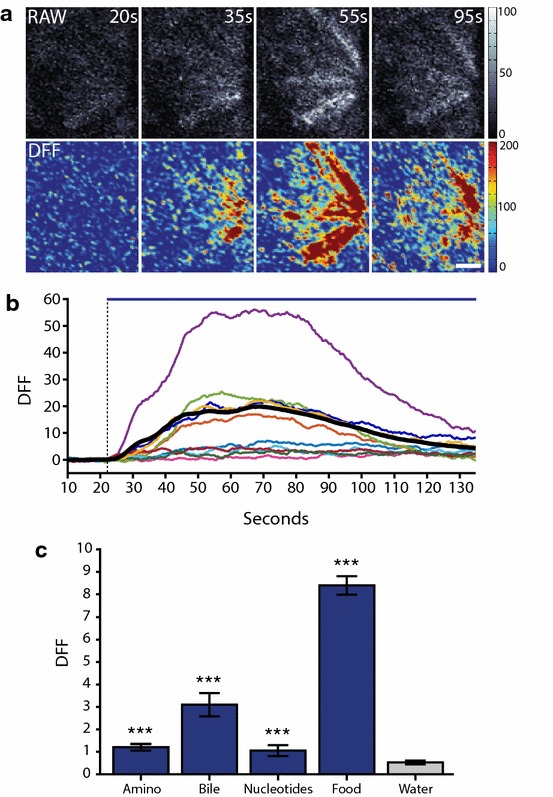Fig. 2.

Odour detection in OSNs of wild-type Tg(elavl3:GCaMP5) at 2.5 dpf. a Frames of food odour response time course displayed as RAW image (top row) and DFF (change in fluorescence over baseline fluorescence; ΔF/F, DFF; bottom row). b Example traces of individual OSNs responses in time after addition of food odour, dashed line represents odour arrival at olfactory epithelium and solid line represents duration of odour delivery. Coloured lines represent individual example OSN responses, thick black line is mean of all OSNs (N = 382 OSNs). Data acquisition speed was 2 Hz. c Mean OSN-response amplitude to different odour classes used in this study compared to the water control (N = 4 fish, 382 OSNs, ***P < 0.001, Mann–Whitney U test). Bars represent mean and SEM. Scale bar is 10 µm
